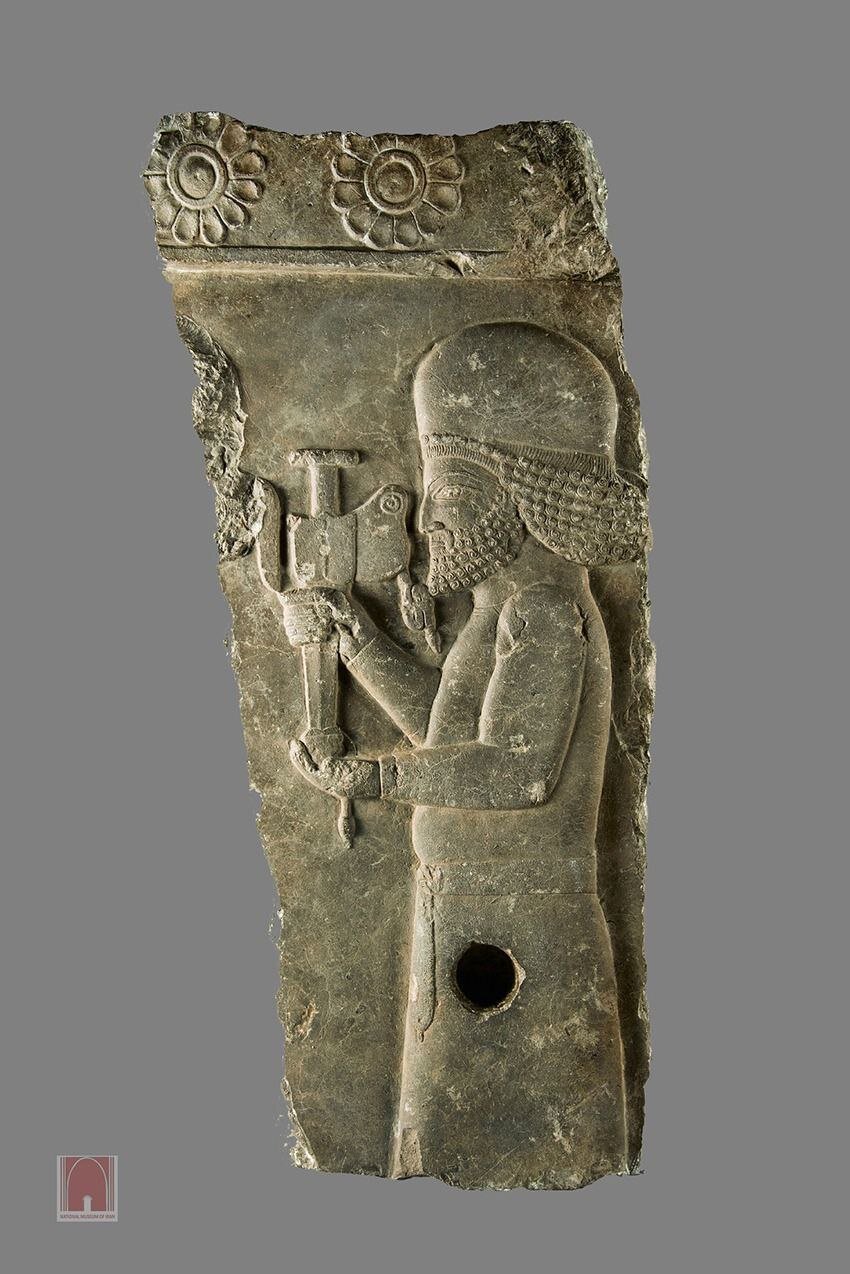Echoes of the past: Fragment of an Achaemenid relief

The architectural reliefs of the Achaemenid Empire are far more than mere decoration; they are a powerful and sophisticated visual language designed to convey the empire's ideology, unity, and grandeur.
Carved with exceptional precision and detail on the limestone stairways and palaces of ceremonial capitals like Persepolis, these reliefs served a primary purpose: propaganda. They depicted a vast, orderly, and harmonious empire where diverse nations, identified by their unique attire and offerings, willingly brought tribute to the benevolent "King of Kings."
This imagery reinforced the monarch's legitimacy and divine mandate to rule. Stylistically, the reliefs synthesize artistic influences from across the empire—including Mesopotamian, Egyptian, Ionian Greek, and Median traditions—to create a unique and cohesive imperial style. The repetitive, dignified figures and scenes of ceremony were not meant to portray individual action but to represent the eternal and stable power of the empire and the unwavering support of its subjects.
This stone relief from Persepolis depicts a figure wearing a garment fastened at the waist with a Median belt and a domed-shaped hat, holding a short sword and a scabbard known as an akinakes. A border of rosette motifs is visible at the top of the relief. It likely belonged to the Palace of Artaxerxes III (Palace G) or the western staircase of the Apadana.
The most famous examples of Achaemenid stone reliefs are found in the Apadana at Persepolis. The northern and eastern façades feature double stairways adorned with intricate, mirroring reliefs. On each façade, one side depicts twenty-three delegations from across the Persian Empire bringing tribute and gifts, while the opposite side shows Median and Persian nobles, guards, and attendants. Originally, a panel depicting the king enthroned occupied the center of each façade, though these were later removed and replaced.
Other structures at Persepolis with stairway reliefs include the Central Building, the Palace of Xerxes, Palaces G and H, and the Palace of Darius. These reliefs portray groups of nobles in Median and Persian attire, along with figures ascending the stairs carrying food, beverages, and live animals. It is believed that all these reliefs were originally painted.
Persepolis, also known as Parseh (or Takht-e Jamshid, "Throne of Jamshid," in Persian), is an archaeological treasure located in the fertile plain of Marvdasht in northern Fars province. Founded by Darius I the Great around 518 BCE, it served as the magnificent ceremonial capital of the vast Achaemenid Empire for many years, primarily used for celebrating the Persian New Year (Nowruz) and for hosting representatives from across the empire's vast territories. This awe-inspiring complex of palaces, treasuries, and audience halls stands as a powerful symbol of ancient Persian power, architectural genius, and artistic achievement. Its immense historical and cultural value was globally recognized in 1979 when it was inscribed as a UNESCO World Heritage Site, solidifying its status as one of Iran's most significant and cherished historical monuments. Today, despite being sacked by Alexander the Great in 330 BCE, its majestic ruins, including towering columns, intricate stone carvings, and monumental stairways, continue to draw scholars and visitors from around the world, offering a breathtaking window into the grandeur of the first Persian Empire.
AM
